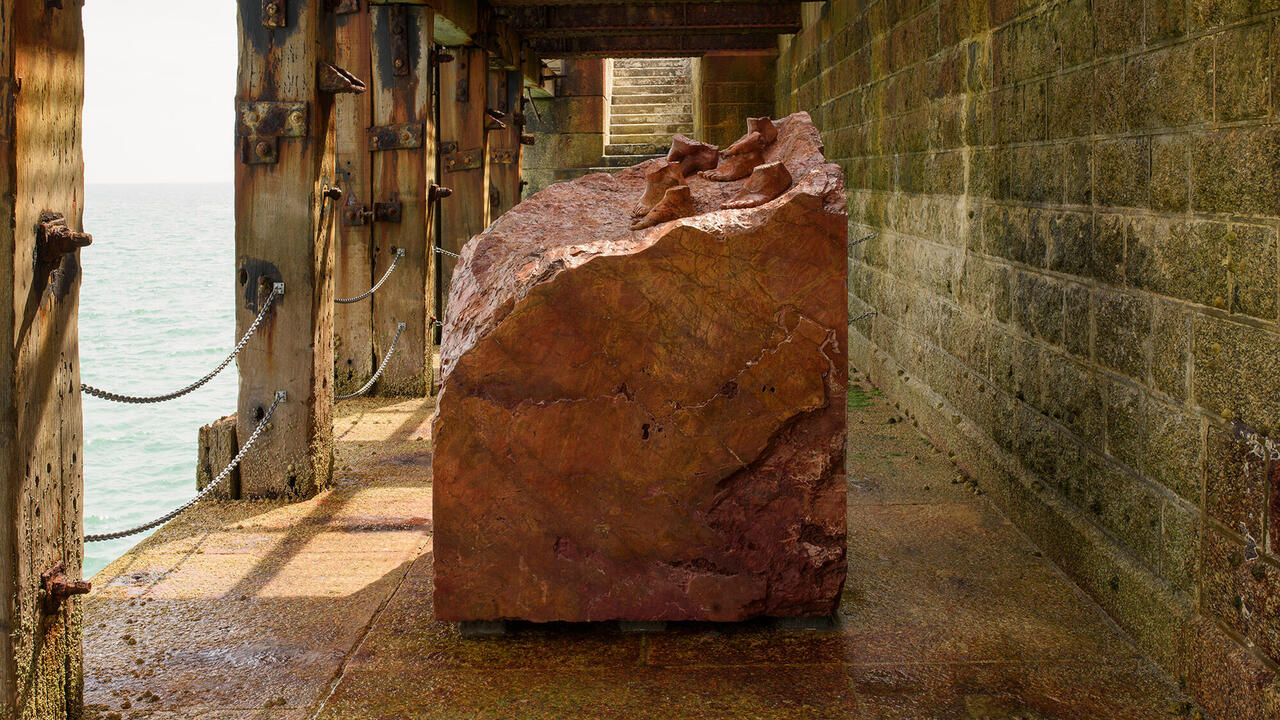Enter the ‘Interior’ World of the Subject
An ambitious group show at Michael Werner Gallery, London, curated by Andrew Bonacina, invites us to examine the possibilities of human representation through the works of 28 artists
An ambitious group show at Michael Werner Gallery, London, curated by Andrew Bonacina, invites us to examine the possibilities of human representation through the works of 28 artists

No matter how intimate our connection is with another person, we can never truly know their innermost thoughts. Yet, across the ages, artists have sought to convey the interior lives of their subjects in portraits – whether through figuration or abstraction. ‘Interior’, an ambitious group show at Michael Werner Gallery curated by Andrew Bonacina, invites viewers to examine the possibilities of human representation through the works of 28 artists, historical and contemporary.
Nothing here is fixed: in Enrico David’s Study for Circulation of the Eye: Our Body and the Body of the Thing (2022), bronze human parts float independently of complete bodies; Frank Auerbach’s wife is barely distinguishable within an abstract tangle of paint in Reclining Head of Julia (2020–21); while soft mark-making melds sitter and background in three works by Gwen John. In its most successful moments, the exhibition posits interior and exterior worlds as permeable, with no clear delineation between body and mind. Total depiction of a human, if truly possible, is shown to demand far more than physical likeness.

The domestic interior of the gallery’s sprawling townhouse, with its freshly painted soft grey walls, adds a sense of intimacy to the works. In the front two rooms, Anne Low’s uncanny umbrella sculptures and Angus Suttie’s ceramics are contrasted with unnerving paintings by Kai Althoff and Julien Nguyen. Art therapist Gilbert Lewis often depicts his sitters, some of whom were also patients, from behind. In Untitled (1988–89) the subject’s lack of eye contact undermines the intimacy implied by his bare shoulders and neck. Similarly, Willa Wasserman’s expansive abstract painting Still Life and X (2022) offers only hints at representation; a vase of dead flowers and a self-portrait emerge from a mass of fluid pink marks on copper punctured with brass screws.
In the gallery’s cavernous Victorian Winter Garden, human figures carved into a giant fireplace connect with the transitionary forms surrounding them. Enrico David’s spidery Parafulmine (Lightning Rod) (2022) depicts two bodies connected at the waist. It’s a functional lightening rod, inviting dangerous energy to flow through its inanimate form. The works in this space speak to an unnerving darkness that resides within. Austin Osman Spare’s series of intricately rendered drawings of demons and desolate wastelands (‘Threshold: Quasi-Automatic Drawings’, c.1944–45) convey the psychological horrors experienced by London residents during the Blitz in World War II. In Anita Steckel’s nearby Untitled (c.1967), a multitude of faces painted in red and rust tones appear to bleed together.

The amalgamation of bodies is a thread running throughout ‘Interior’. Upstairs, Jake Grewal’s One and One (2020) depicts two young male figures blended at the hip; next to this, Félix Vallotton’s Quatre Torses (1918) shows four sturdy female bodies merging. Vallotton’s nudes hint at the despair of World War I: all four have the tops of their heads cut off by the crop of the canvas, their faces largely hidden by their long, dark hair. In wartime, the artist implies bodies become viewed as disposable, detached from the significance of the life within.
Nairy Baghramian’s Eule (Owl) (2007), a stool on spindly legs topped with a delicate polyester resin cast in the shape of a bottom, suggests an absent or recently departed human. Mary Stephenson also plays with notions of human absence and presence. Baby Blue Door (2022) shows a large house through the empty windows of which weave lengths of white fabric, visualizing the somatic and psychic void created by the loss of close family members.

Bonacina builds a sense of community between the artists, who span from students to household names. Several of the painters in the show, including Florian Krewer and Stanislava Kovalcikova, studied at the Kunstakademie Düsseldorf under Peter Doig, adding further thematic and compositional connections. ‘Interior’ feels akin to having intense conversations with a host of new acquaintances, which leave you with the sense that everyone you have encountered is somehow unknowable.
‘Interior’ is on view at Michael Werner Gallery, London, until February 03, 2023
Main image: Félix Vallotton, Quatre Torses (Four Torsos, detail), 1918, oil on canvas, 89 × 116 cm. Courtesy: © The Estate of the Artist and Michael Werner Gallery, New York and London; photograph: Jörg von Bruchhausen.























